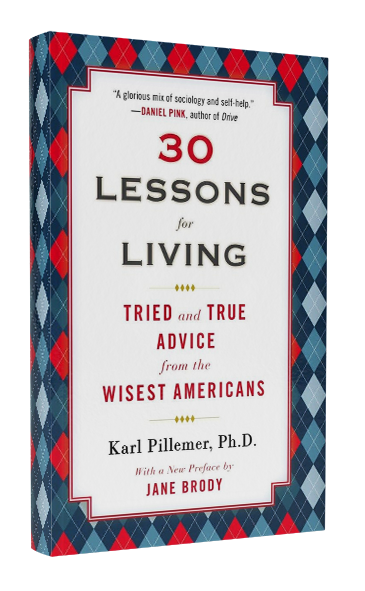Of Effort, Risks, and Rewards
ByGV Ravishankar
PublishedFebruary 29, 2024
Understanding payoffs, probabilities of outcomes, and having a decision-making framework go a long way in both life and business.
On one of our family walks last week, we had a discussion on sending in a Letter of Continued Interest (LOCI) to a university my son had applied to and is waiting to hear from. While there is no guarantee that writing such a letter will increase your chances of getting into an institute of your choice, it does give one a sense of hope. So you could see this as an input with a low probability of changing the outcome, but one that’s definitely worth a shot.
Skeptical of the endeavor, my son was resisting writing the LOCI because he felt there wasn’t much use in sending the letter. But if it works, the payoff is admission into one of his dream schools. When compared to the payoff, the effort needed to write the letter was relatively low, mostly the opportunity cost of his time. Given the asymmetry of the risk and payoff, we decided he absolutely must send the LOCI, despite his desire to avoid the pain of writing one.
This led us to a conversation on asymmetric risks and rewards. We reminded ourselves of a bet we had placed during a family vacation. The bet was on what the logo of a specific company looked like. My wife was on one side of the bet, my son and I on the other. The bet was that if my wife lost, she would give up shopping for her favorite brand for the duration of the trip. If she won, my son and I would be proved wrong and it would be a nice ego boost for my wife. In this situation, the upside of the win versus the downside of the loss made this an asymmetric risk-reward situation. We often end up taking such risks in life. As for my wife, she lost the bet.
Working closely with founders and watching them make decisions has given me a bird’s-eye view of how we often, individually and collectively (as boards), fail to understand payoffs and the risks associated with decision-making. Operating with some frameworks may help us make fewer mistakes. We will define one such framework in this article.
Although commonsensical, as you will see, sometimes having a framework or a set of rules leads to better decisions by helping us prevent or compensate for the biases and emotions we carry that can hamper our decision-making abilities.
There are three parts to making better decisions with respect to choosing the risks one takes. The first involves understanding payoffs, or the size of the rewards or losses of these risks, and if they will pan out positively or negatively.
The second part involves understanding the probabilities of the outcomes. The third, and often the most important part, is having a process or a set of rules to make these decisions without being influenced by emotions and biases that we may not even be aware of. We will discuss a few decision-making scenarios before we get to the frameworks for those decisions.
Understanding Payoffs
Let’s start with an example. A company we backed was publicly listed. It decided to make a large global acquisition in the Western market. The target asset was breakeven in terms of its profitability but was quite large in revenue scale, and the acquisition price was quite low (relative to the acquirer’s market cap).
The acquirer felt the risk-reward was favorable and went ahead with the acquisition. For a while, the markets rewarded the decision with a significant increase in market cap. But when the Western markets entered a recession, and the target, post-acquisition, lost revenues, its losses increased significantly.
Neither the company nor its investors had budgeted for this possibility. It was presumed that, in the worst-case scenario, the capital invested would be written off if the acquisition didn’t work out. No one thought the losses from the acquisition would significantly dent the acquirer’s value, yet this is exactly what happened for a period of time following the recession.
Many times, we mischaracterize a risk as an optionality that only has an upside and whose downsides are capped at the extent of the resources deployed. The status quo is assumed to be the worst case, while indeed the worst case could be far worse, as we saw in this situation. This is why one should put in rigorous work to assemble a picture that compiles as many risk scenarios as possible.
In the venture business where we invest for upside in startups, characterizing it as an optionality usually is more acceptable as when you lose, you have the downside capped at 1x your investment but with significant upside if something works really well (the Power law). But even in venture firms, we clearly articulate the risks of losses and debate the opportunity costs versus simply seeing them as optionalities. We discuss pre-mortems and talk about what can go wrong and plan for these scenarios.
Actively discussing the risk and planning for it is critical. This is best described by Jensen Huang, founder of Nvidia, in the Acquired podcast. A short (edited) transcript is below:
Ben: So is the lesson for founders out there when you have conviction on something like the RIVA 128 or CUDA, go bet the company on it. It seems like your lesson learned from this is yes, keep pushing all the chips in because so far it’s worked every time. What do you think about that?
Jensen: No, no. When you push your chips in, I know it’s going to work. Notice, we assumed that we taped out a perfect chip. The reason why we taped out a perfect chip is because we emulated the whole chip before we taped it out. We developed the entire software stack. We ran QA on all the drivers and all the software. We ran all the games we had. We ran every VGA application we had.
When you push your chips in, what you’re really doing is, when you bet the farm, you’re saying, I’m going to take everything in the future, all the risky things, and I pull in in advance. That is probably the lesson. To this day, everything that we can prefetch, everything in the future that we can simulate today, we prefetch it.
Understanding Probabilities
While understanding payoffs requires one to be analytical, understanding probabilities is trickier, especially because predicting the future is hard. But by understanding base rates from the past and using one’s own historical experiences, one can make an educated guess at the probability of outcomes and then change one’s execution strategy to maximize the chances of success.
For example, an often-quoted research-backed fact is that >70% of M&As fail, and ideally, this should feed into the decision-making process for an acquisition. Yet most times, people don’t believe such base rates apply to them because they overestimate their own ability to manage risks.
In sports like cricket, if a team is chasing 350+ runs in the fourth innings of a test match with two days to go, the base rates indicate that they won’t be able to play out so many remaining overs without losing all wickets. Understanding the base rates, the teammates may choose to aggressively bat as they know that taking this riskier path is the only way to improve their odds of winning in that scenario. Otherwise, the status quo will lead to a definite loss.
So, when does one go all in and when does one not take the risk?
Making the Decision
Now that we’ve covered payoffs (upside/downside) and understand the probability of outcomes (high or low), we can put together a framework to make better decisions about committing efforts or taking risks.
- When probability of success is high;
- And if the payoff of success or the rewards are high, then you are in great shape to go all in.
- If the payoff of success is low but still significantly higher than the cost of going for it, then you will want to take the shot.
- Just remember though, when you go all-in, you should only do so if the losses from a failure are relatively modest. If there is a chance of wipeout or significant loss, even if remote, you should think hard about it or plan to mitigate that outlier risk (just like how Jensen talks about pulling it all in advance in the podcast shared above). Speeding on the highway to catch a flight may not be worth it if it comes with even a small risk to life. Remember, black swan events happen more frequently than we believe.
- When probability of success is low;
- If the rewards that could follow from a decision are significantly higher than the cost of taking that risk, then you should take the shot; this is the case in my son’s LOCI example. In this scenario, the downside is low (a few hours spent writing the LOCI) but if successful, the upside is high, and hence taking the shot is still worth it. This may explain why people buy the lottery (leaving out the highs of gambling)? This is why running to the train station to catch the train—even when late—may be a good idea. The benefits are greater than the costs involved.
- If the cost of loss is high, or the gains are not material relative to costs, and probability of success is low, then one should absolutely avoid moving forward. My wife’s bet fell in this bucket and hence was avoidable.
- When there’s status quo;
If your downside scenario remains the same – meaning if you did something and failed or didn’t do it all – then going all in is totally the right approach, much like what Jensen refers to when talking about his situation of taping out the new chip or the team chasing a large score in the test match.
Going back to the bet my wife lost, it turns out she did know that the odds of enforcement of the outcome were low and hence did not perceive the risk of loss the same way I did. So in her mind, it would have remained status quo if she had lost the bet, but would have been a boost for the ego if she was right! I should have known better that I would never win a bet against my wife. Note to self: Not a risk I should ever take!
“Individually and collectively, we sometimes fail to understand payoffs and the risks associated with decision-making. But operating with a framework in mind can help us make fewer mistakes. A framework also leads to better decisions by helping prevent or compensate for the biases and emotions we carry that can hamper our decision-making abilities.”
Here are three articles I found interesting:
A Few Laws of Getting Rich: This is another Morgan Housel gem where he addresses the typical issues to be aware of when wealthy. Housel delves into challenges like shifting from admiration to envy, the fragility of quick wealth, escalating expectations, and the fleeting nature of legacy. The blog’s central message encourages prioritizing present happiness over an obsessive pursuit of wealth for an uncertain future.
Active Patience: This is a great read for investors to learn about the concept of active patience. As markets slow down and activity levels fall, impatience creeps in. Through this article, Ian Cassel reminds us that great opportunities arise only every few years, and impatience often leads to accepting mediocre opportunities. Active patience involves knowing what one is looking for and waiting until finding it. The process involves developing temperament, finding principles that guide investment decisions, and committing fully to those principles.
The Foundations of AI: I came across this proposal from 1955 for a study on artificial intelligence (AI) at Dartmouth while doing some research for my son’s college applications. The term AI was coined by Dartmouth mathematician John McCarthy and it’s always interesting to see how things started and how far we’ve come.
If you have time for longer reads:

The Boy, the Mole, the Fox and the Horse by Charlie Mackesy
If you can set aside 15 to 20 minutes, this book provides the highest ROI of your time. Beautifully written and sketched, the book highlights some of the most important affirmations we need to hear. Not only is this a must-read, it is worth reading a few times a year.

30 Lessons for Living: Tried and True Advice from the Wisest Americans by Karl Pillemer
This book distills wisdom from interviews with over 1000 older Americans. The author, a gerontologist, shares practical and insightful advice garnered from seniors who have lived through various experiences. Many of these insights feel like common wisdom, but when they emerge as repeated themes through lived experiences, you really understand the importance of these lessons. Also as a fun exercise, you can try and tick off how many of these lessons you follow in your own life!
Do write in at gv@peakxv.com if any of my interests intersect with yours! Click here to read more articles on Peak XV’s blog. For more editions of Connecting the Dots, click here. I’m also on LinkedIn and Twitter.
